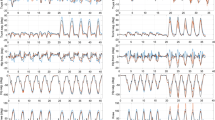Abstract
Marker-less motion capture (MOCAP) systems based on consumer technology simplify the analysis of movements in several research fields such as industry, healthcare and sports. Even if the marker-less MOCAP systems have performances with precision and accuracy lower than the marker-based MOCAP solutions, their low cost and ease of use make them the most suitable tools for full-body movements analysis. The most interesting category is relative to the use of RGB-D devices. This research work aims to compare the performances of the last two generations of Kinect devices as marker-less MOCAP systems: Microsoft Kinect v2 and Azure devices. To conduct the tests, a list of specific movements is acquired and evaluated. This work measures the improvements of the Azure in tracking human body movements. The gathered results are presented and discussed by evaluating performances and limitations of both marker-less MOCAP systems. Conclusions and future developments are shown and discussed.
Access this chapter
Tax calculation will be finalised at checkout
Purchases are for personal use only
Similar content being viewed by others
References
Zhang, Z.: Microsoft kinect sensor and its effect. IEEE Multimedia 19(2), 4–10 (2012)
Furniss, M.: Motion Capture (1999). http://web.mit.edu/m-i-t/articles/index_furniss.html
Fernandez-Baena, A., Susın, A., Lligadas, X.: Biomechanical validation of upper- body and lower-body joint movements of kinect motion capture data for rehabilitation treatments. In: Proceedings of the 4th International Conference on Intelligent Networking and Collaborative Systems, INCoS 2012, pp. 656–661 (2012)
Chen, C., Jafari, R., Kehtarnavaz, N.: Improving human action recognition using fusion of depth camera and inertial sensors. IEEE Trans. Hum.-Mach. Syst. 45(1), 51–61 (2015)
Kotsifaki, A., Whiteley, R., Hansen, C.: Dual Kinect V2 system can capture lower limb kinematics reasonably well in a clinical setting: concurrent validity of a dual camera markerless motion capture system in professional football players. BMJ Open Sport Exerc. Med. 4(1) (2018)
Stone, E.E., Butler, M., McRuer, A., Gray, A., Marks, J., Skubic, M.: Evaluation of the microsoft kinect for screening ACL injury. In: Proceedings of the Annual International Conference of the IEEE Engineering in Medicine and Biology Society, EMBS, vol. 2013, pp. 4152–4155 (2013)
Bernardina, G.R.D., Monnet, T., Pinto, H.T., De Barros, R.M.L., Cerveri, P., Silvatti, A.P.: Are action sport cameras accurate enough for 3D motion analysis? A comparison with a commercial motion capture system. J. Appl. Biomech. 35(1), 80–86 (2019)
Vicon: Vicon Award Winning Motion Capture Systems. https://www.vicon.com/
Scano, A., Mira, R.M., Cerveri, P., Molinari Tosatti, L., Sacco, M.: Analysis of upper-limb and trunk kinematic variability: accuracy and reliability of an RGB-D sensor. Multimodal Technol. Interact. 4(2), 14 (2020)
Cai, L., Ma, Y., Xiong, S., Zhang, Y.: Validity and reliability of upper limb functional assessment using the Microsoft Kinect V2 sensor. Appl. Bionics Biomech. (2019)
Vitali, A., Regazzoni, D., Rizzi, C., Lupi, G.: Low cost markerless motion capture systems: a comparison between RGB cameras and RGB-D sensors. In: Proceedings of the ASME IMECE 2020. American Society of Mechanical Engineers (ASME) (2020)
Microsoft: Azure Kinect DK. https://azure.microsoft.com/it-it/services/kinect-dk/
Albert, J.A., Owolabi, V., Gebel, A., Brahms, C.M., Granacher, U., Arnrich, B.: Evaluation of the pose tracking performance of the azure Kinect and Kinect V2 for gait analysis in comparison with a gold standard: a pilot study. Sensors 20(18), 5104 (2020)
Author information
Authors and Affiliations
Corresponding author
Editor information
Editors and Affiliations
Rights and permissions
Copyright information
© 2021 The Author(s), under exclusive license to Springer Nature Switzerland AG
About this paper
Cite this paper
Rosa, B., Colombo Zefinetti, F., Vitali, A., Regazzoni, D. (2021). RGB-D Sensors as Marker-Less MOCAP Systems: A Comparison Between Microsoft Kinect V2 and the New Microsoft Kinect Azure. In: Wright, J.L., Barber, D., Scataglini, S., Rajulu, S.L. (eds) Advances in Simulation and Digital Human Modeling. AHFE 2021. Lecture Notes in Networks and Systems, vol 264. Springer, Cham. https://doi.org/10.1007/978-3-030-79763-8_43
Download citation
DOI: https://doi.org/10.1007/978-3-030-79763-8_43
Published:
Publisher Name: Springer, Cham
Print ISBN: 978-3-030-79762-1
Online ISBN: 978-3-030-79763-8
eBook Packages: Intelligent Technologies and RoboticsIntelligent Technologies and Robotics (R0)




